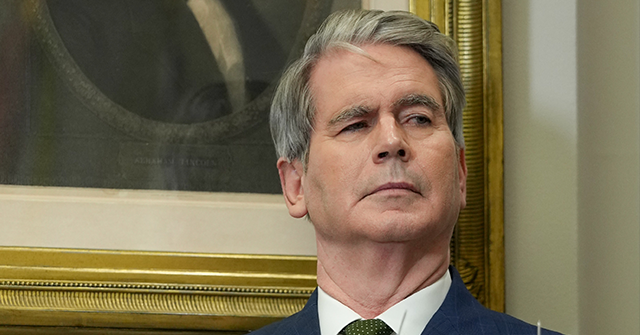Bessent Will Be Ready for His Next Mission: Make the Fed Great Again
Scott Bessent says he’s happy at Treasury. He has every reason to be. The tax cuts are in place, the trade deals are restructuring the global economy, and the deregulatory machinery is humming.
But by next summer, the center of gravity in economic policymaking will shift—from the fiscal and administrative levers of Treasury to the monetary mechanics of the Federal Reserve. That will be the moment when Bessent becomes indispensable in a new capacity.
He has already delivered results. Treasury under Bessent has reshaped incentives, redirected global capital flows, and neutralized the bureaucratic veto power that throttled investment under the old regime. The next task is making that framework durable. That means restoring monetary policy as a tool for growth and ensuring the Fed does its job without undermining the rest of the economic strategy.
The Japan Signal
Long before entering government, Bessent offered one of the most clear-eyed assessments of Japan’s monetary dilemma. Where others assumed near-zero rates were always stimulative, he observed that a broken credit transmission channel could make low rates functionally contractionary. Japan’s savers weren’t earning, banks had no margin, and monetary policy was stuck in stasis. The solution? A carefully executed rate hike—not to tighten, but to restore intermediation. As Bessent wrote, raising rates would be “a Bernanke-style helicopter cash drop” via interest income and credit expansion.
It wasn’t a provocation—it was a framework. He saw that monetary policy lives on the balance sheet: who earns interest, who pays it, and whether the system can lend productively. When the Bank of Japan finally exited negative rates this spring, it did so on the logic Bessent had laid out—tighten the rate, loosen the economy.
The relevance to the U.S. is obvious. If the goal is higher real investment, stable money, and better credit transmission, then the Fed needs a chair who understands how monetary settings flow through banks, households, and capital markets—not just in theory but in operation. Bessent has already demonstrated that ability. His approach is grounded in incentives and mechanics, not vibes and models. That’s exactly what the Fed has been missing.
Re-Privatizing Credit
Bessent’s signature phrase—“re-privatizing the economy”—captures more than a philosophy. It’s a programmatic shift. And nowhere is that shift more urgent than inside the Federal Reserve. The prior regime tried to repurpose the Fed into a soft climate regulator, using guidance and scenario testing to steer capital away from politically disfavored sectors, and an enforcer of DEI agendas. The effect was to create a quiet veto on energy and heavy industry, enforced not by statute but by supervisory pressure, and a financial sector compromised by leftwing social engineering goals.
Bessent would shut that down. His principle is straightforward: price the risk, don’t pick the winner. If a company is creditworthy, banks should be free to lend—without regulatory second-guessing based on political fashion. Under his leadership, supervision would return to its core function: enforcing capital requirements, testing resilience, and keeping the plumbing clear. No more pilot programs, no more transition scenarios, no more shadow taxes on lawful activity.
That would open the door to a genuine investment boom. With a predictable reserves framework, a working discount window, and a supervisory culture that respects market signals, banks would have the confidence to extend term credit to energy producers, infrastructure developers, manufacturers, and entrepreneurs. That is what re-privatizing credit looks like: not subsidizing politically favored firms, but restoring price signals and removing ideological barriers.
The Kudlow Continuity
If Bessent moves to the Fed, someone will need to carry the Treasury portfolio forward. The obvious choice is Larry Kudlow. He already knows the job from his time as NEC director. He knows the policy mix cold. And he’s the best communicator the Trump economy has ever had.
Kudlow translated supply-side economics into plain language: tax cuts mean more take-home pay and incentives for businesses to invest and grow the economy, tariffs can rebuild America’s industrial might while paving a path to genuinely free trade, and deregulation means businesses can get moving again. He’s called it a blue-collar boom, and that’s exactly what it is. Heading into the midterms, the administration will need someone who can take the economic case directly to the public—daily, unapologetically, and with a little flourish. Kudlow was born for that. He would be stepping into a Treasury already set up for success, with the policy framework locked in and the machinery in motion. His job would be to explain it clearly, convincingly, and often.
The Fix
We are entering the second phase of the Trump economy. The first ran through Treasury—through tax cuts, tariffs, regulatory reform, and global dealmaking. The second runs through the Fed. It requires a chair who can bring monetary policy back to earth, rebuild credibility with markets, and translate balance sheet mechanics into pro-growth action. That’s what Bessent has done his entire career. His time at Treasury has only sharpened the edge.
As for Jerome Powell, his term as chair ends in May. He can legally remain on the Board, but he shouldn’t. Doing so would politicize the Fed, suggest the formation of an anti-administration bloc, and undermine the legitimacy of his successor. The tradition is to step down. Powell should honor it.
This is a moment for clarity. The Fed needs to recover its focus. The economy needs credit, not choreography. And the administration needs someone at the helm who understands how growth happens, where policy fails, and why incentives matter more than slogans. That’s Bessent.
Read the full article here
